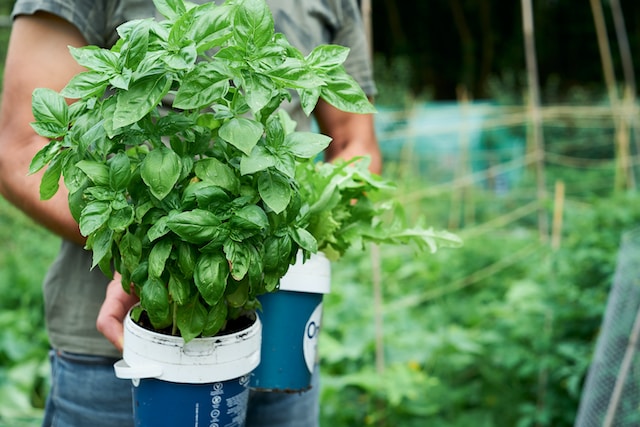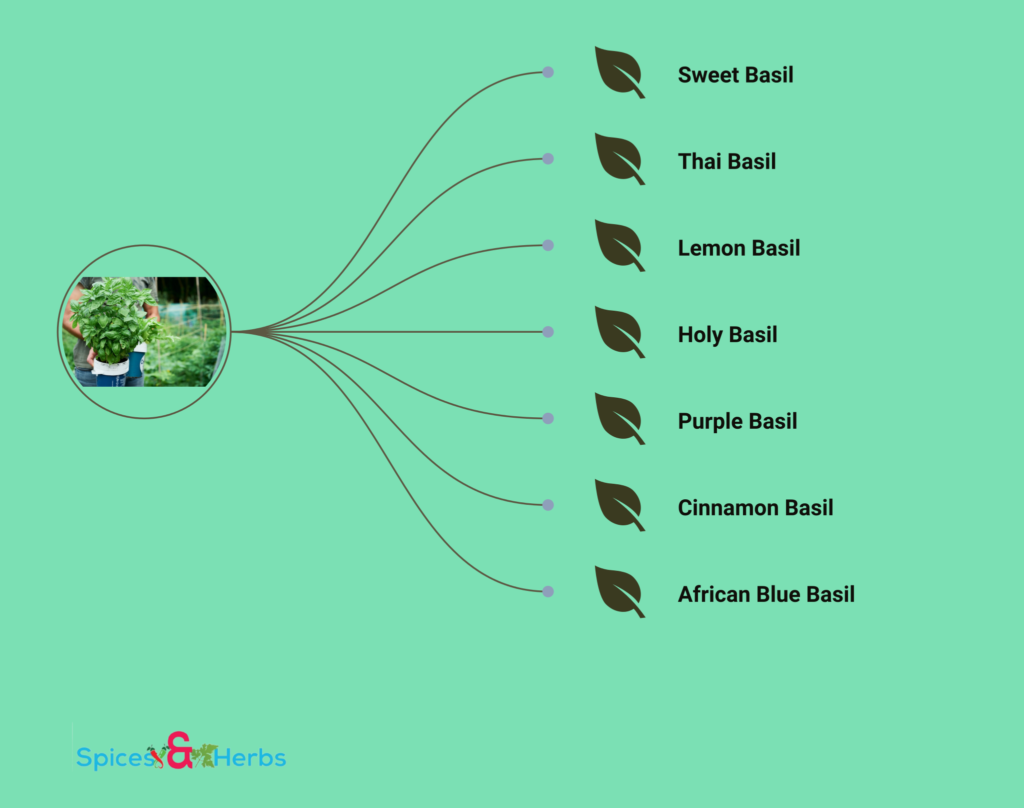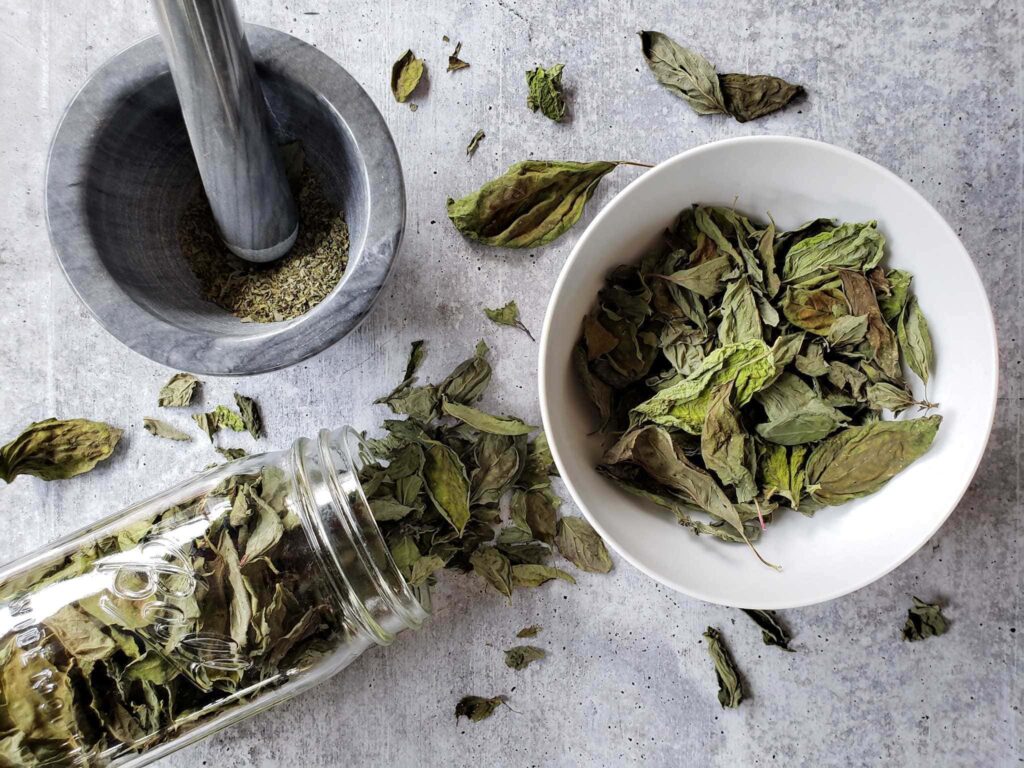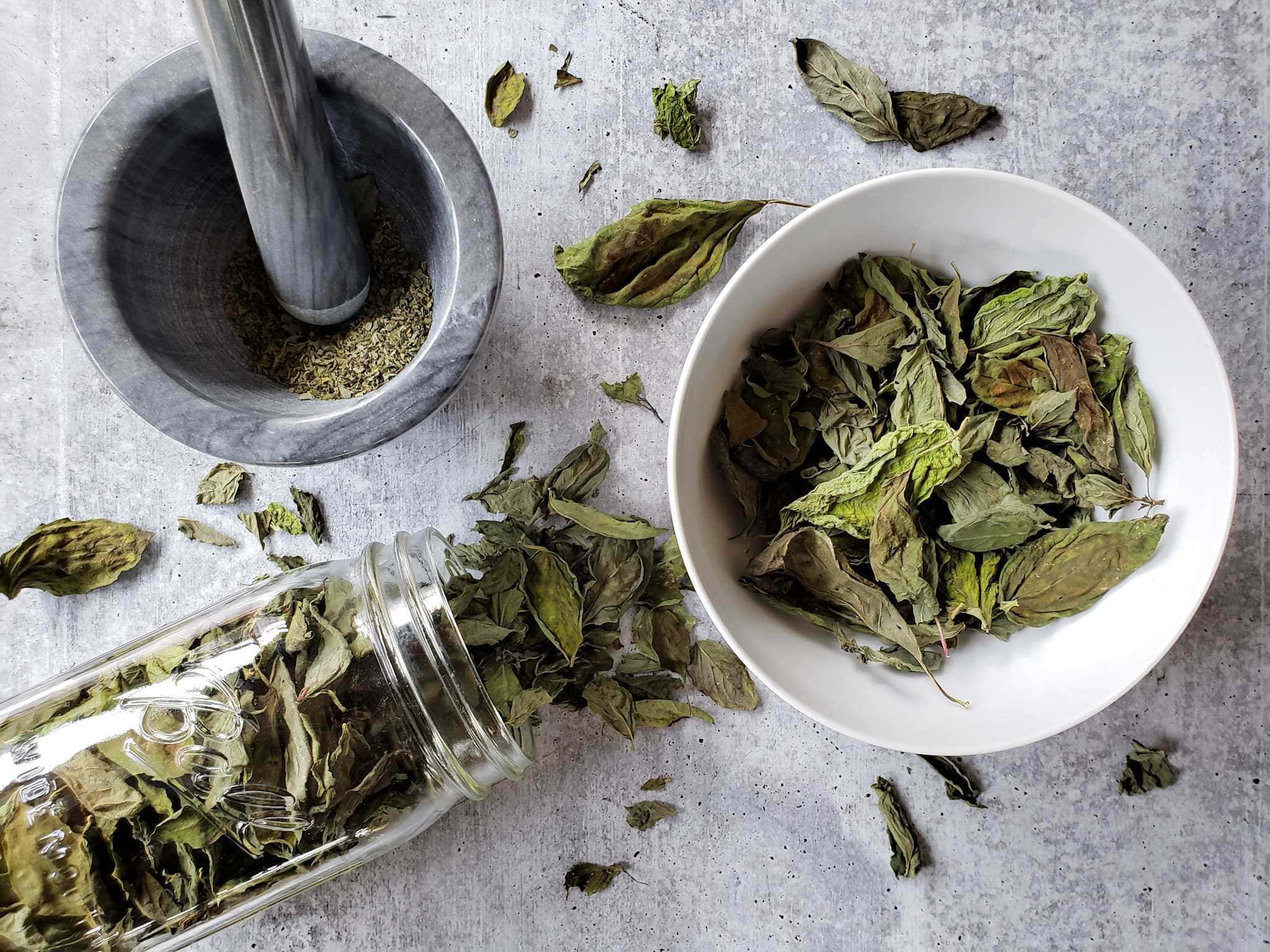There’s something undeniably captivating about the aroma and taste of fresh basil. This versatile herb, with its vibrant green leaves and distinct peppery-sweet flavor, has the power to elevate any dish it graces. Whether you grow your own basil or buy it from the local market, preserving this herb allows you to extend its shelf life and savor its essence long after the growing season ends. In this blog, we will reveal the best way to preserve basil, exploring various techniques that will ensure you have a stash of this culinary treasure at your fingertips all year round.
Importance Of Preserving Basil For Year-Round

🟩 Continuous availability
Preserving basil ensures a steady supply of this versatile herb throughout the year, regardless of the season or availability in local markets. This is particularly useful for individuals living in regions with shorter growing seasons or limited access to fresh herbs.
🟩 Cost savings
Basil is often more affordable when purchased in larger quantities or during its peak season. If you preserve basil, whether, through drying, freezing, or other methods, you can take advantage of bulk purchases or harvests, saving money in the long run and avoiding the higher prices of fresh basil during the off-season.
🟩 Culinary flexibility
Basil adds a unique and vibrant flavor to a wide variety of dishes, including pasta sauces, soups, stews, salads, sandwiches, pizzas, and more. By preserving basil, you can incorporate its distinct taste into your cooking year-round, allowing for greater culinary creativity and exploration of different flavor combinations.
🟩 Nutritional value
Basil is rich in essential nutrients, including vitamins A, K, and C, as well as minerals such as calcium and iron. It also contains antioxidants with potential health benefits. Preserving basil allows you to retain these nutritional properties, ensuring that you can enjoy its healthful qualities even when fresh basil is not readily available.
🟩 Flavor preservation
Proper preservation methods help retain the unique flavor profile of basil. Whether you choose to preserve basil leaves by drying, freezing them, making basil-infused oils, or creating pesto, preserving basil correctly ensures that its distinctive taste, fragrance, and culinary impact are maintained. This allows you to add authentic basil flavors to your dishes year-round, enhancing the overall dining experience.
🟩 Garden surplus
If you grow basil in your garden or have access to a local farmers’ market, preserving basil is an excellent way to utilize an abundant harvest. Basil plants often produce more leaves than you can immediately use, and if you preserve basil, you can make the most of your garden’s yield and reduce waste.
🟩 Culinary traditions
Basil holds cultural and culinary significance in many cuisines worldwide, including Italian, Thai, and Mediterranean. Preserving basil ensures that you can uphold and celebrate these culinary traditions regardless of the time of year, allowing you to explore diverse recipes and immerse yourself in various cultural dishes.
🟩 Herbal remedies and tea
Basil has been used in traditional medicine for its potential health benefits, such as aiding digestion, reducing inflammation, and promoting relaxation. Preserved basil can be used in herbal remedies, infused in teas, or incorporated into homemade beauty and wellness products, enabling you to harness its therapeutic properties year-round.
By preserving the basil, you can savor the taste, aroma, and versatility of basil in your culinary endeavors throughout the year, ensuring a continuous supply of this beloved herb.
Familiarizing Different Basil Varieties

🟩 Sweet Basil
Sweet Basil is the classic and widely used basil variety that you’re probably most familiar with. It’s like the superstar of the Basil family! With its large, vibrant green leaves and a delightful combination of sweetness and slight spiciness, Sweet Basil is a staple in Italian cuisine. It’s the star ingredient in the famous pesto sauce and brings a fresh and aromatic touch to tomato-based dishes, salads, and sandwiches.
🟩 Thai Basil
Get ready to take your taste buds on an exotic adventure with Thai Basil! This variety is a common ingredient in Southeast Asian cuisines, particularly Thai and Vietnamese dishes. Thai Basil boasts smaller, narrow leaves with a lovely purple tinge on the undersides and stems. Its flavor carries a hint of licorice or anise, adding a unique and vibrant element to stir-fries, curries, soups, and noodle dishes.
🟩 Lemon Basil
If you’re a fan of zesty, citrusy flavors, Lemon Basil will be your new best friend in the herb garden. Its bright, light green leaves come with a delightful lemony scent and taste, making it a fantastic addition to teas, salads, desserts, and even seafood dishes. Just imagine the refreshing twist it brings to your summer beverages or fruity salads!
🟩 Holy Basil
Holy Basil, also known as Tulsi, holds a sacred place in Hinduism and has been used for centuries in Ayurvedic medicine. Besides its spiritual significance, Holy Basil offers a unique flavor profile with hints of pepper and clove. It’s known for its potential medicinal properties and is often used in herbal remedies and teas. The small leaves of Holy Basil have a purplish tint, making it visually appealing in herb gardens as well.
🟩 Purple Basil
If you’re looking to add a splash of vibrant color to your dishes, Purple Basil is an excellent choice. Its deep purple or burgundy leaves make it a striking and ornamental addition to gardens and culinary creations alike. Purple Basil retains the sweet flavor of its green cousin but carries a slightly stronger clove-like taste. It’s a lovely choice for garnishing salads, and pasta dishes, or even infusing oils and vinegar.
🟩 Cinnamon Basil
Prepare to indulge your senses with Cinnamon Basil, which brings a delightful cinnamon-like aroma and flavor to the table. This variety is a versatile addition to both sweet and savory dishes. From fruit salads and desserts to curries and stir-fries, Cinnamon Basil adds a warm and comforting twist to your culinary creations. Its green leaves with purple veins also make it visually appealing in herb gardens.
🟩 African Blue Basil
African Blue Basil is a fascinating hybrid variety that combines the characteristics of different basil species. It showcases large, eye-catching leaves with a purplish or reddish tinge. With a unique flavor reminiscent of cloves, African Blue Basil lends itself well to salads, sauces, marinades, and even flavored vinegar. Plus, its ornamental value makes it a fantastic addition to any garden.
These basil varieties are just the tip of the iceberg! Exploring the diverse world of basil opens up a world of culinary possibilities and allows you to infuse your dishes with a range of flavors, aromas, and visual delights. So, don’t be afraid to experiment and discover your personal favorites among these fascinating basil varieties.
Step 1: Harvesting Basil
🟩 Best time to harvest basil leaves
The best time to harvest basil leaves is when the plant has grown to a size that can sustain some pruning but before it starts flowering. Typically, this is when the basil plant has reached a height of about 6 to 8 inches (15 to 20 cm) and has developed a sufficient number of leaves. It’s best to harvest basil leaves in the morning after any dew has evaporated, as this is when the leaves are at their freshest and contain the highest concentration of essential oils that give basil its flavor and aroma. When harvesting, choose mature leaves that are fully developed and have a rich green color.
Start by snipping off individual leaves from the top of the plant using clean, sharp scissors or pruning shears, making a clean cut just above a set of leaves or side shoot. Avoid removing all the leaves and leave at least a third of the foliage intact to allow the plant to continue growing. If you notice any flower buds forming, pinch them off immediately to redirect the plant’s energy toward leaf production. Regular harvesting promotes healthy growth and encourages the basil plant to produce more leaves.
🟩 Techniques for harvesting basil
There are several techniques you can employ for harvesting basil. One method is individual leaf harvest, where you selectively pluck mature leaves from the basil plant. Starting from the top, choose leaves with a vibrant green color and gently remove them, making a clean cut just above a set of leaves or side shoots. Another approach is stem harvest, which involves cutting the stem just above a set of leaves or side shoot to obtain a larger quantity of basil. This method encourages the plant to branch out and promote more leaf production.
Pinch pruning is another effective technique, where you remove the top portion of the plant, including the growing tip, by pinching or cutting just above a set of leaves. This stimulates lateral growth, resulting in a bushier plant with increased leaf production. Regardless of the method chosen, regular harvesting is important to encourage new growth, prevent premature flowering, and maintain the plant’s shape. Remember to use clean and sharp tools to minimize damage to the plant while harvesting.
🟩 Maximizing basil yields through pruning and pinching
Pruning: Pruning involves selectively cutting back parts of the basil plant to stimulate growth and branching. Follow these steps for pruning basil:
- Start pruning when the basil plant has grown to a height of about 6 to 8 inches (15 to 20 cm) and has developed a few sets of leaves.
- Using clean and sharp scissors or pruning shears, make a clean cut just above a set of leaves or side shoots.
- Remove the top portion of the plant, typically around a quarter to a third of its overall height.
- Pruning encourages lateral growth, leading to a bushier plant with more branching points and increased leaf production.
Pinching: Pinching involves removing the top growing tip of the basil plant by pinching it off with your fingers or using scissors. Here’s how to pinch basil:
- Begin pinching when the plant has developed a few sets of leaves and reached a height of about 4 to 6 inches (10 to 15 cm).
- Identify the topmost pair of leaves on the stem.
- Gently pinch off the stem just above this pair of leaves, removing the growing tip.
- Pinching redirects the plant’s energy towards lateral growth, resulting in more side shoots and a fuller plant with increased leaf production.
Step 2: Preserving Basil

A. Drying method
-
Air drying
Air drying is a traditional and straightforward method. First, gather a bunch of basil stems and tie them together. Hang the bunch upside down in a well-ventilated area, away from direct sunlight. The goal is to let the air circulate around the leaves. After about 1 to 2 weeks, the leaves should become crispy and crumble easily when touched. Once dry, remove the leaves from the stems and store them in an airtight container.
-
Oven drying
Oven drying provides a quicker alternative. Begin by preheating your oven to its lowest temperature setting. Spread the basil leaves in a single layer on a baking sheet lined with parchment paper. Place the baking sheet in the oven and slightly prop the door open to allow moisture to escape. Check the basil after 1 hour and continue drying until the leaves are completely dry and crumbly, typically within 2 to 4 hours. Let the basil cool, and then store it in an airtight container.
-
Using a food dehydrator
Using a food dehydrator offers a convenient and controlled method. Arrange the basil leaves in a single layer on the trays of a food dehydrator. Set the dehydrator to a low temperature, typically between 95°F to 115°F (35°C to 46°C). Allow the basil to dry in the dehydrator for 1 to 4 hours, depending on the moisture content and desired crispness. Periodically check the leaves, and once they are dry and brittle, remove them from the dehydrator. Let the basil cool before transferring it to an airtight container for storage.
B. Freezing method
To freeze fresh basil, wash and dry the leaves. Blanch them briefly, then pat them dry. Next, choose between freezing whole leaves or chopping them into a puree. For whole leaves, freeze them on a baking sheet before transferring them to a sealed container. Alternatively, fill ice cube trays with chopped basil or puree, then transfer the frozen cubes to a container. Label and store in a freezer below 0°C (32°F). When needed, use the frozen basil in cooked dishes. Remember, frozen basil may have a slightly different texture from fresh basil.
C. Basil pesto
Basil pesto is a fantastic method for preserving basil. To make basil pesto, start by washing and drying fresh basil leaves. Gather garlic cloves, pine nuts (or other nuts like walnuts or almonds), grated Parmesan cheese, extra-virgin olive oil, and salt. In a food processor or blender, combine the basil leaves, garlic, nuts, Parmesan cheese, and a pinch of salt. Pulse the ingredients a few times to break them down. While the processor is running, slowly pour in the olive oil through the feed tube until the mixture becomes smooth and creamy. Transfer the pesto to airtight containers, ensuring they are properly sealed.
You can store the pesto in the refrigerator for a few days, covering the surface with a thin layer of olive oil. For longer storage, freeze the pesto in ice cube trays or small freezer-safe containers, then transfer them to a freezer bag or container. When needed, thaw the desired amount in the refrigerator or at room temperature. Basil pesto is perfect as a sauce for pasta, a spread for sandwiches, or a flavorful addition to various dishes.
D. Basil-infused oil or vinegar
For basil-infused oil, place the basil leaves in a sterilized glass jar or bottle. Fill the container with your chosen oil, ensuring that the leaves are fully submerged. Seal the container tightly and store it in a cool, dark place for approximately 1-2 weeks. This duration allows the flavors of basil to infuse into the oil. After the infusion period, strain the oil to remove the basil leaves, and transfer the infused oil to a clean bottle or jar.
For basil-infused vinegar, follow a similar process. Fill a sterilized glass jar or bottle with your chosen vinegar, and add the basil leaves. Seal the container tightly and let it infuse in a cool, dark place for around 1-2 weeks. Once infused, strain out the basil leaves and transfer the flavored vinegar to a clean bottle or jar.
E. Basil Salt and Sugar
Basil salt and basil sugar are creative ways to preserve basil and infuse its flavors into seasoning ingredients. To make basil salt, finely chop the basil leaves or process them in a food processor to smaller pieces. It’s important to remove excess moisture to prevent clumping. In a bowl, combine the chopped basil with salt, using a ratio of approximately 1 part basil to 4 parts salt. Thoroughly mix the ingredients until well combined. Transfer the basil salt to clean, airtight containers, ensuring they are properly sealed. Store the containers in a cool, dry place away from direct sunlight.
Similarly, for basil sugar, finely chop the basil leaves or gently crush them using a mortar and pestle. In a bowl, combine the chopped basil with sugar, using the same ratio as the basil salt. Mix the ingredients thoroughly to distribute the basil flavors. Transfer the basil sugar to clean, airtight containers and seal them tightly. Store the containers in a cool, dry place.
Bonus Part: Creative Uses of Preserved Basil
🟩 Herb Butter
Preserved basil can be incorporated into herb butter to elevate the flavors of your dishes. Begin by softening unsalted butter and finely chopping preserved basil leaves. Mix the basil into the softened butter along with other herbs like garlic, thyme, or rosemary. Season with a pinch of salt and pepper. This herb butter can be spread on bread, used to enhance the flavors of roasted vegetables or grilled meats, or melted over steamed fish for an extra burst of herbaceousness.
🟩 Tomato Sauce
Enhance your homemade tomato sauce by adding preserved basil. Whether you’re making a marinara sauce, a rich bolognese, or a chunky tomato and vegetable sauce, preserved basil can take it to the next level. Simply stir a handful of preserved basil leaves into the sauce while it simmers. The basil will infuse the sauce with its aromatic flavor, adding depth and freshness to your pasta dishes, pizzas, or even soups.
🟩 Herb Ice Cubes
Preserve the fresh flavors of basil by making herb-infused ice cubes. Place preserved basil leaves in an ice cube tray, fill it with water, and freeze until solid. These basil-infused ice cubes can be added to various beverages like lemonade, iced tea, or cocktails to infuse them with a refreshing and aromatic twist. As the ice cubes melt, they release the flavors of the basil, enhancing the taste of your drinks.
🟩 Herb-Rubbed Meats
Create a flavorful herb rub for meats by combining preserved basil with other herbs and spices. Mix finely chopped preserved basil with ingredients like garlic powder, dried thyme, paprika, salt, and pepper. Pat the mixture onto chicken, pork, or beef before grilling or roasting to create a delicious herb-infused crust. The preserved basil adds a wonderful aroma and taste to the meats, enhancing their overall flavor profile.
🟩 Savory Bread and Muffins
Elevate the taste of your savory bread and muffins by adding preserved basil. Whether you’re baking a loaf of bread, dinner rolls, or savory muffins, finely chop the preserved basil leaves and incorporate them into the batter. The basil’s unique flavor will complement ingredients like cheese, sun-dried tomatoes, olives, or even roasted garlic, resulting in a delightful and aromatic baked good.
With these creative uses of preserved basil, you can enjoy the delightful flavors of basil in various culinary creations. From infused oils to herb-infused salts and flavorful sauces, preserved basil adds a unique touch to your dishes, bringing a burst of freshness and aroma to your cooking endeavors.
Final Words
In conclusion, preserving basil is an act of both practicality and passion. It enables us to capture the essence of the herb’s aroma and flavor, preserving it in a form that can be enjoyed even when fresh basil is scarce. Whether you choose to dry, freeze, or transform it into a fragrant pesto, the methods of preservation open up a world of culinary possibilities. So, as you embark on your basil preservation journey, remember that you are preserving not just a herb, but a rich tapestry of flavors and memories. Let the aroma of basil waft through your kitchen, and may your dishes forever be touched by the magic of this timeless herb.
Frequently Asked Question
Q1. How can I grow basil at home?
Basil thrives in warm climates and requires well-drained soil and plenty of sunlight. You can grow basil from seeds or purchase young plants from a nursery. Plant them in a pot or directly in the ground, ensuring they receive adequate water and regular pruning.
Q2. What are some common culinary uses for basil?
Basil is a versatile herb used in a wide range of dishes. It is commonly used in Italian cuisine, as a key ingredient in pesto, tomato-based sauces, salads, and even as a garnish for pizzas and pasta dishes. It also pairs well with fruits, such as in fruit salads or infused in drinks.
Q3. How long can I store preserved basil?
Properly stored dried basil can retain its flavor for up to a year, while frozen basil can last for several months. However, it’s best to use preserved basil within the first six months for optimal flavor.

